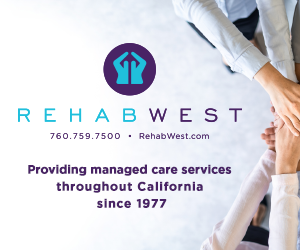Industry Insights
April 27, 2018
Luna: Workers' Comp Needs Quality Measures for Clinical Practice Guidelines
- National
- - 0 shares
The U.S. Department of Health and Human Services’ Agency for Healthcare Research and Quality has announced it will no longer fund its National Guideline Clearinghouse.

Carlos Luna
With nearly 4,000 published clinical practice guidelines from 39 countries in existence, poorly developed content is widely available and, unfortunately, widely used. Workers’ compensation needs quality measures to ensure the standards of care used to treat injured workers are reliable and trustworthy.
A recent article announcing AHRQ’s decision quoted an industry leader describing the NGC as a convenient place to find a large number of medical treatment guidelines. He continued by stating, “Is it mission critical to the work comp system? I think not.”
He concluded by suggesting that whether someone steps in to take over NGC’s work — and how quickly — will be an indication of its importance. Respectfully, but emphatically, I disagree.
Why did AHRQ establish the NGC?
The NGC’s importance cannot be validated by someone continuing the work. Its importance was established in 2008 by Congress when it asked the National Academies of Sciences Engineering and Medicine, formerly the Institute of Medicine, to conduct a study to define best practices used in developing CPGs. Congress expressed concern in the vast amount and quality-deficient information that guideline users, including medical practitioners, were inundated with.
The NGC’s purpose was twofold:
- To be a mechanism used to immediately and objectively identify high-quality, trustworthy CPGs to help inform improved health-related decision-making. In doing so, patients will benefit from enhanced health care quality and outcomes.
- To help developers create high-quality guidelines that adhere to established standards.
Congress’ concerns were echoed by the NASEM in its Report Brief stating, “Most guidelines used today suffer from shortcomings in development. Dubious trust in guidelines is the result of many factors, including failure to represent a variety of disciplines in guideline development groups, lack of transparency in how recommendations are derived and rated, and omission of a thorough external review process.”
The NGC is relevant 10 years later
A decade later, a set of well-known guidelines in workers’ compensation was evaluated for technical quality by Rand. Appraisers from Rand evaluated stakeholder involvement, including whether the review group included at least one methodology expert.
The publisher of the guidelines introduced Rand to content chapter leads who had relevant clinical expertise, but lacked evidence of substantial methodological expertise pertinent to conducting literature searches and developing guidelines.
Following this determination, Rand noted that the publisher revised the reviewed guidelines to state that two methodologists were involved in development but failed to provide information on names, titles, roles in development of the guideline, or relevant expertise. The score in this area was reduced as a result and left Rand with uncertainty about the involvement of methodological experts in the development of the publisher’s content.
Not surprisingly, the lack of methodological expertise fostered other critical weaknesses in the content. This included, among other things, limited information regarding the process by which the publisher’s chapter development teams identify, select, evaluate and synthesize evidence.
Although Rand’s study, which was funded by iCare Insurance & Care New South Wales, Australia, ultimately provided overall favorable ratings on the content, the NGC removed it entirely from its database for its material deficiencies in development methodology and process.
Concerns regarding the quality of information that guideline users are inundated with should be as prevalent today as it was in Congress in 2008. Meeting IOM criteria will be even more important if the NGC doesn’t find another home. Without appropriate oversight in the development of CPGs, anything might be called “quality,” imperiling the well-being of injured workers.
The sentiment reflected in the comments about the NGC’s importance is a clear indication that the workers’ compensation community has not made the connection between quality CPGs and measurable improved health outcomes. It is also a glaring indicator that the need for quality measures for CPGs is very real and of utmost urgency.
Carlos Luna is director of government affairs for ReedGroup, which publishes the American College of Occupational and Environmental Medicine treatment guidelines and drug formulary.
Advertisements
Columns
- Langham: Uniformity in Regulations 04/25/24
- Kamin: Expanding the Good-Faith Personnel Action Defense 04/24/24
- Moore: Reciprocity Adds Authority 04/23/24
- Montgomery: Sedgwick Tries PPO Discount for Med-Legal (Again) 04/19/24
- Kamin: More Policy Exclusions Would Reduce Losses 04/18/24
- Phillips: It's All Settled 04/17/24
- Snyder: Public Benefit Rules Have Changed, but It Might Not Make a Difference 04/12/24
- Headrick: Clearing Up a Common Misconception 04/11/24
- Snyder: Litigation Guidelines Should Define Four Settlement Triggers 04/10/24
- Kirsch: Depositions of Comp Carrier Employees After Intervening in Third-Party Actions 04/09/24
- Wilson and Bennett: Could AI Have Prevented the Opioid Crisis in Workers' Comp? 04/08/24
- Moore: Pandemic Effect Over in March 2027. Really? 04/05/24
- Geaney: A Brief History of Our State's Workers' Compensation Act 04/04/24
- Kamin and Larres: Significant Panel Decision Clarifies Recon Confusion 04/03/24
- Gelman: Exposed to 'Forever Chemicals' 04/02/24
- Montgomery: Cyberattack Delays Payment of San Francisco Bills 04/01/24
- Young: Indoor Heat Regs in Turmoil 03/29/24
- Langham: Shootings and Compensability 03/27/24
- Geaney: Third-Party Liens Not Always Due Right Away 03/26/24
- Larres: State Supreme Court Denies Review of Our Appellate Win 03/25/24
Now Trending
- Workers' Compensation News
-
Calif. DWC
Launches Portal for QME…
Posted on Apr 24, 2024Dr. Ron Perelman says: “The problem is that most QMEs are older docs. Many are semiretired.…”Kimberley J Pryor says: “I had planned to post a well constructed comment, but I stopped…”
-
Calif. Worker Gets
Benefits for Crash Despite Leaving
Job Site Without Employer's…
Posted on Apr 25, 2024
-
Calif. Committee
Passes Bill to Eliminate Contractor
Comp Coverage…
Posted on Apr 26, 2024Gary Nelson says: “I think Dodd was right in 2022. …”
-
Calif. DWC Updates
Time-of-Hire…
Posted on Apr 23, 2024
-
Calif. Committee
Passes Bill to Expand 4850…
Posted on Apr 22, 2024
-
Calif.
Appropriations Committee Places TD
Bills on Suspense…
Posted on Apr 24, 2024
-
Calif. Newsom Says
Indoor Heat Safety Rules Too
Expensive for…
Posted on Apr 25, 2024
-
Neb. Divided
Supreme Court Reinstates
Occupational Disease Claim for…
Posted on Apr 23, 2024
-
Ore. Worker Can
Request Examination if Carrier
Supports Claim Denial With IME…
Posted on Apr 22, 2024
-
Ark. Worker Not
Entitled to Additional Benefits
After Date of…
Posted on Apr 22, 2024
Jobs
Upcoming Events
May 5-8, 2024
Risk World
Amplify Your Impact There’s no limit to what you can achieve when you join the global risk managem …
May 13-15, 2024
NCCI's Annual Insights Symposi
Join us May 13–15, 2024, for NCCI's Annual Insights Symposium (AIS) 2024, the industry’s premier e …
May 13-14, 2024
CSIA Announces the 2024 Annual
The Board of Managers is excited to announce that the CSIA 2024 Annual Meeting and Educational Con …
Social Media Links
c/o Business Insurance Holdings, Inc.
Greenwich, CT 06836





No Comments
Log in to post a comment